Find all the best Museums and Heritage sites now with us….
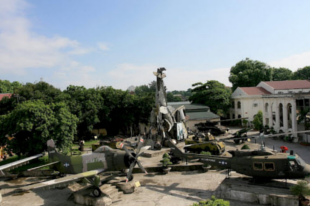 The Viet Nam Military History Museum, set up on 17 July 1956, is one of seven national museums in Vietnam. It covers 12,800 m². It is situated in central Hanoi, opposite the Lenin Park and near the Ho Chi Minh Mausoleum. Entrance is 20,000 VND. |
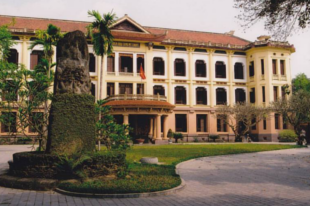 The Vietnam National Museum of Fine Arts is located in Hanoi, Vietnam. It is a museum showcasing Vietnam’s fine arts from a range of historical periods. It is the country’s primary art museum, the second being the smaller Ho Chi Minh City Museum of Fine Arts. |
|
 The Vietnam Museum of Revolution is a museum in Hanoi, Vietnam. Located in the Tong Dan area of the city, it was established in August 1959 in a two-storey building, formerly used by the Trade Department of Vietnam. Located in the Tong Dan area of the city, it was established in August 1959 in a two-storey building, … |
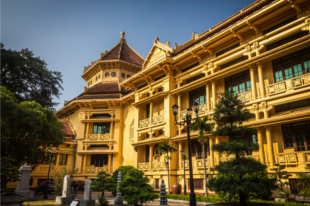 The National Museum of Vietnamese History is located in the Hoan Kiem district of Hanoi, Vietnam. The museum building which was an archaeological research institution of the French School of the Far East under French colonial rule of 1910, was extensively refurbished in 1920. |
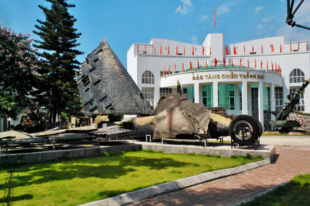 The B-52 Victory Museum, Hano is located at 157 Đội Cấn, Ba Đình district, Hanoi. The museum comprises one main building with displays on the history of the Vietnamese revolution, the First Indochina War, the Vietnam War, Operations Rolling Thunder, Linebacker and Linebacker II and the air defense of Hanoi. |
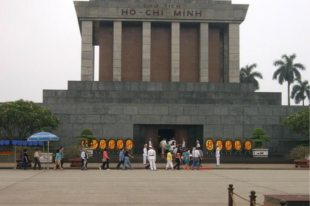 The Ho Chi Minh Museum is located in Hanoi, Vietnam. It is a museum dedicated to the late Vietnamese leader Ho Chi Minh and Vietnam’s revolutionary struggle against foreign powers. It was constructed in the 1990s. |
 Hanoi Ceramic Mosaic Mural is a ceramic mosaic mural on the wall of the dyke system of Hanoi, Vietnam. With a length of about 4 km, the Ceramic Road is one of the major projects that were developed on the occasion of the Millennial Anniversary of Hanoi. |
 St. Joseph’s Cathedral is a church on Nha Tho Street in the Hoàn Kiếm District of Hanoi, Vietnam. It’s a late 19th-century Gothic Revival (Neo-Gothic style) church that serves as the cathedral of the Roman Catholic Archdiocese of Hanoi to nearly 4 million Catholics in the country. |
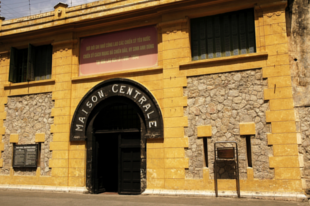 Hoa Lo Prison was a prison used by the French colonists in Vietnam for political prisoners, and later by North Vietnam for U.S. Prisoners of War during the Vietnam War. During this later period it was sarcastically known to American POWs as the Hanoi Hilton. |
 Ngoc Son Temple The Temple of the Jade Mountain is located on Hoàn Kiếm Lake in central Hanoi, Vietnam. Being built on the Jade Islet and dedicated to Confucian and Taoist philosophers and the national hero, Trần Hưng Đạo, the small temple was expanded in 1865. |
 Quan Thanh Temple (Quán Thánh Temple), formerly known as Trấn Vũ Temple, is a Taoist temple in Hanoi, Vietnam. Dated to the 11th century, the temple was dedicated to Xuan Wu, or Trấn Vũ in Vietnamese, one of the principal deities in Taoism. |
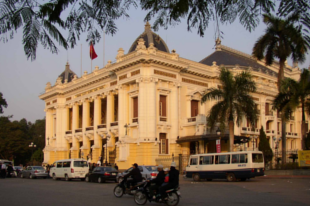 The Hanoi Opera House is an opera house in central Hanoi, Vietnam. It was erected by the French colonial administration between 1901 and 1911. It was modeled on the Palais Garnier, t… |
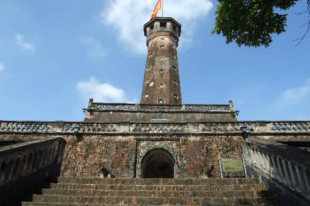 The Flag Tower of Hanoi is a tower in Hanoi, Vietnam, which is one of the symbols of the city and part of the Hanoi Citadel, a World Heritage Site. Its height is 33.4 m. |
 Hanoi Old Citadel– The central old citadel of Hanoi was the former residence of Vietnamese monarchs dating back to Đại Việt, when the city was known as Thăng Long. |
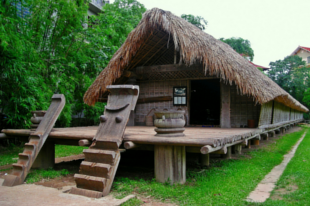 The Vietnam Museum of Ethnology is a museum in Hanoi, Vietnam, which focuses on the 54 officially recognised ethnic groups in Vietnam. It is located on a 3.27-acre property in the Cầu Giấy District, about 8 km from the city center. It is widely considered to be the finest modern… |
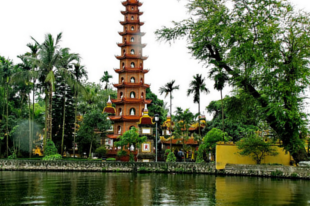 Chua tran quoc (Trấn Quốc Pagoda), the oldest Buddhist temple in Hanoi, is located on a small island near the southeastern shore of Hanoi’s West Lake, Vietnam. |










